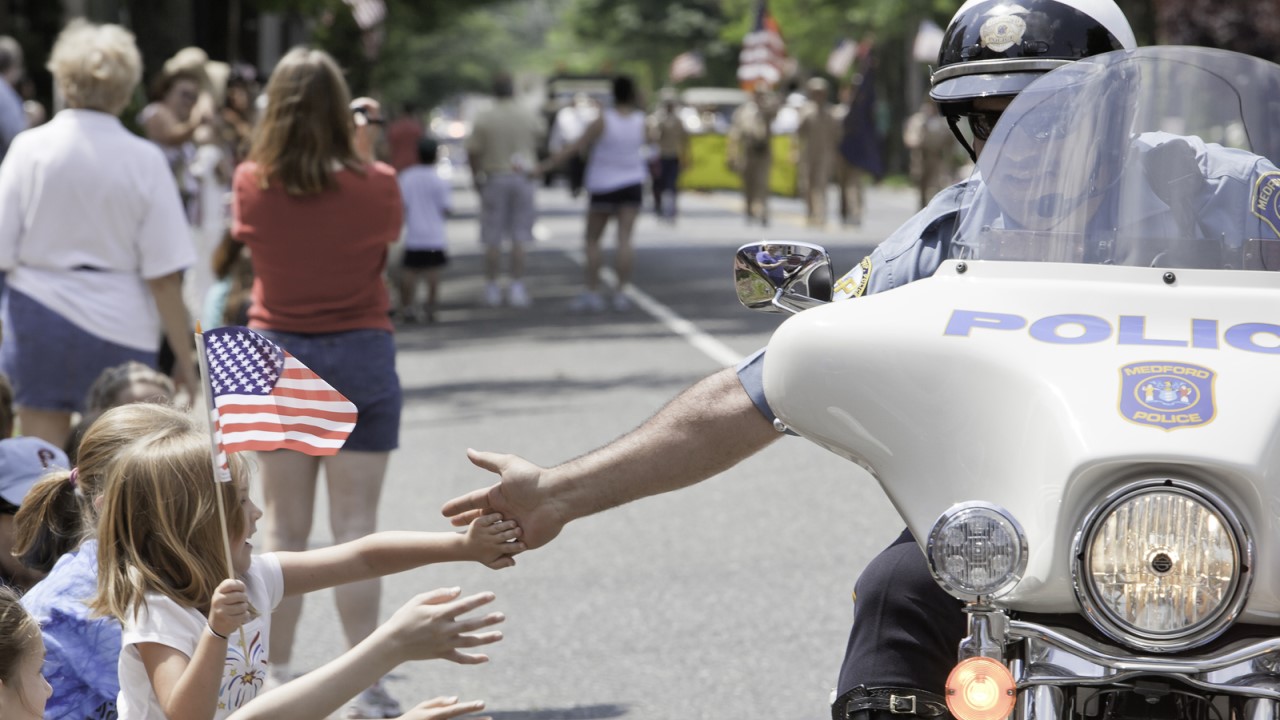
An initial consideration of a statement containing public engagement and public safety might beg the question, How are they even related? A close follow-up question might be, What is there to engage the public about when it comes to public safety, and how would you even do it?
These questions speak to a collective assumption that police officers have always existed in our communities and their presence is as ubiquitous as schools or houses of worship. The police force we see now is a relatively modern invention in response to changing ideas about public order. American policing in the 1700s was very informal; community members volunteered for night watch shifts. This system was in place until industrialization and urbanization in the north warranted a more comprehensive public safety infrastructure. In the south, more organized policing took the form of patrols. During the 1800s, policing varied based on the region and communities. It was not until the early 1900s that policing became the standardized, professional system that served as the foundation for what we see today.
Fast forward to the twenty-first century, and in the last few years we have seen community perspectives toward policing shift significantly, calling attention to a changing paradigm in our neighborhoods. A recent National Community Survey cited in Polco’s “Top 10 Community Needs According to U.S. Residents” shows decreasing levels of community trust in local government and public throughout the pandemic. However, according to Polco’s research, public safety is third on the list of community needs. Results from The National Law Enforcement Survey show that the top public safety concerns in order in 2022 are drug abuse, DUIs, traffic problems, burglaries/thefts/robberies, and domestic violence.
Recent research reveals two major challenges for public safety: (1) communities are increasingly distrustful of police, and (2) public safety is sometimes forced to be “security” for poorly designed meetings. Both challenges place public safety in a precarious position and prompt a close examination of the relationship between public safety and the communities they serve.
Darryl McAllister is the retired police chief of Union City, California, and an instructor for the California Police Chiefs Association training unit. He is keenly aware of how public trust is interwoven with public safety and the subsequent challenges that connection presents.
In his view, “Public trust is the most resonant social mandate for all of government, but public safety, especially in local municipalities, is the most visceral touchpoint for community constituents’ demands of their public services.”
Furthermore, “Despite the vision of local councils or governing bodies, or the efficacy of other municipal services like public works, economic development, or even fire services, it is up to the police organization to drive a robust public engagement and relationship-building effort for community trust to be viable at all.”
A Changing Paradigm
Whereas historically the determining power rested on public safety to ascertain the kind of police department a community needed, current challenges are shifting that decision-making power toward the communities. This process is opening up space for public safety to drive community engagement efforts and prioritize building relationships with the communities they serve.
In La Mesa, California, the police department hosted community input sessions for feedback on how they can improve their services to meet community needs. “The community sessions are part of a comprehensive study that aims to enhance the department’s operational efficiency and responsiveness.” These sessions provide community members with the opportunity to help shape what public safety looks like in their communities.
Across the country in Travelers Rest, South Carolina, the local police department has initiated a community survey process to develop a better understanding of community perception and needs. The survey asks questions on crime perception, changes in resident activities, priority of issues, and assessment of police department efforts. This comprehensive survey will not only enhance the police department’s understanding of the community they serve, but will also help inform future decision-making processes.
While in most cases community input on hiring is primarily in the case of bringing on a new police chief, some cities are extending the invitation to other roles as well. Champaign, Illinois, invites community members to be a part of the hiring process for police officers as resident panelists. “Community members on the interview panel will meet with each applicant and participate in structured panel interviews to assess each candidate’s qualifications.” Following the panel interview, residents provide their feedback to the police chief for consideration in the hiring process.
From the community perspective, these processes allow community members the opportunity to be a part of important aspects of public safety and get to know their public safety officers. From the public safety organization perspective, community engagement processes allow public safety officers to truly get to know the communities they serve and begin building trust.
Community Policing
As many in local government know, successful public engagement rests on trust and it is not something that happens overnight. The first step in becoming acquainted with your community happens months or years before any public engagement process. Within public safety, that first step is community policing or the process by which police officers prioritize getting to know the residents they serve. Community policing is not community engagement, but rather the foundation for public engagement. When done successfully, community policing can yield:
- Strong partnerships with the community.
- Proactive, non-enforcement activities.
- Community-based efforts to address problems.
- Greater cooperation.
Community policing initiates the trust-building process that is pivotal for successful community engagement processes. However, it “cannot be achieved nor sustained through one-off events or clever programs, but rather by instilling an organization-wide culture and philosophy of everyday engagement that embodies humility, procedural justice, a willingness to share and learn, and the pillars of twentieth century policing,” according to McAllister.
The Foundation of Collaborative Success
Public engagement, simply put, is the dialogue between local governments and their communities before, during, and after a decision-making process. It is not the local government selling or convincing the community on an idea or a complaints meeting. Instead, public engagement is a process in which communities are invited to provide feedback and input. In public safety this can take many forms, from small, informal conversations between community members and public safety officers, such as “Coffee with a Cop,” to larger, focused policy discussions in facilitated town hall meeting formats and participating on hiring panels.
Like few other departments within local government, public engagement by police departments spans the “spectrum” from relationship-building and public information to empowering residents to take a larger role in their community’s public safety. This makes it all the more important that public safety leaders (like other municipal officials) define their terms—being very clear about the “why question” when engaging our residents—at the beginning of any public process.
McAllister put it best: “There is no familiarity that would allay the fear of being vulnerable. So, it stands to reason that if public trust is the commodity police desperately seek from their constituents, it makes sense that they truly get to know those from whom they hope to garner trust—and that those constituents have an opportunity to truly get to know their policing providers.”

POOJA BACHANI DI GIOVANNA is the assistant director at the Davenport Institute and works on curriculum development and program delivery, communications, and strategic relations.

PETE PETERSON is dean of the Pepperdine School of Public Policy. Prior to this he was the executive director of the Davenport Institute at the school, where he remains a senior fellow.
New, Reduced Membership Dues
A new, reduced dues rate is available for CAOs/ACAOs, along with additional discounts for those in smaller communities, has been implemented. Learn more and be sure to join or renew today!
